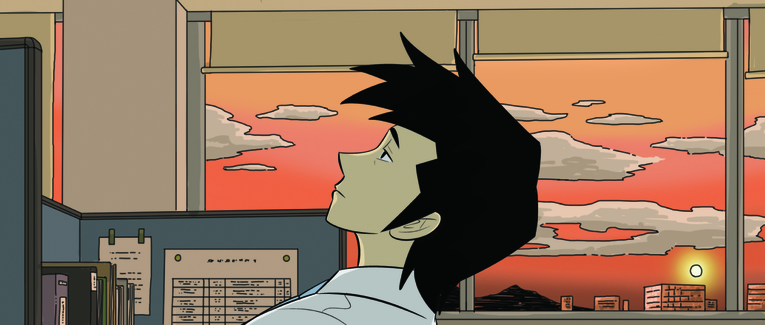20th Manga Division Excellence Award
Incomplete Life
YOON Tae Ho / Translation: FURUKAWA Ayako / KIM Seungbok [South Korea / Japan]
Outline
This ensemble-cast manga offers a realistic look at the joys and sorrows of company employees in South Korea. The title, Misaeng (literally “incomplete life”), is a term from the game of Baduk, the Korean name for Go, and refers to a stone that is “neither dead nor alive.” The hero, JANG Geu-rae, had aspired to be a professional Baduk player and was admitted as an apprentice to the Korea Baduk Association at the tender age of ten. But after failing to become a pro, he left the world of Baduk and eventually, through personal connections, found work as an intern at a large trading firm. There he strives to achieve full-employee status but finds himself dealing with difficult bosses and fellow interns with their own hidden agendas. Lacking an adequate academic or job resume, he now applies the intellectual powers he cultivated playing Baduk to the corporate game. Juxtaposing this scenario with famous matches by actual Baduk players, the manga portrays contemporary South Korean society and the daily travails of company workers. First appearing on the Web, the work became a social phenomenon in South Korea when it was made into a television drama in 2014. It was subsequently dramatized in Japan under the title HOPE: Kitai zero no shinnyu shain (HOPE ~Misaeng: Incomplete Life~) in 2016.
Reason for Award
Manga readers first look at the pictures. Cartoonists study how to put their own personal stamp on their artwork, but curiously enough, there are certain indelible qualities peculiar to the manga of each country. That is true of this manga as well. One senses something difficult to approach yet refreshing about it even before seeing the artist’s name; then one is drawn in by the superb art and by the story. The premise—a former Go prodigy goes to work for a trading company—sounds somewhat contrived, but it becomes clear that it tacitly addresses real problems faced by young people in South Korea today. The structure of the narrative, which proceeds like moves on a Go board as the various characters experience victory and defeat, is sublime. Adapted for television in both South Korea and Japan, the work’s reputation as a social phenomenon preceded it, particularly in its home country. No doubt readers empathized with a hero trapped in the cracks appearing in a society obsessed with academic credentials and economic growth. Japan has shared the same predicament for some time; the economic bubble of the eighties and nineties is now just a distant dream. One hopes that the young Japanese of what is labeled the “pessimistic generation” will take a good look at the small Go board of wins and losses that is society today. (INUKI Kanako)



